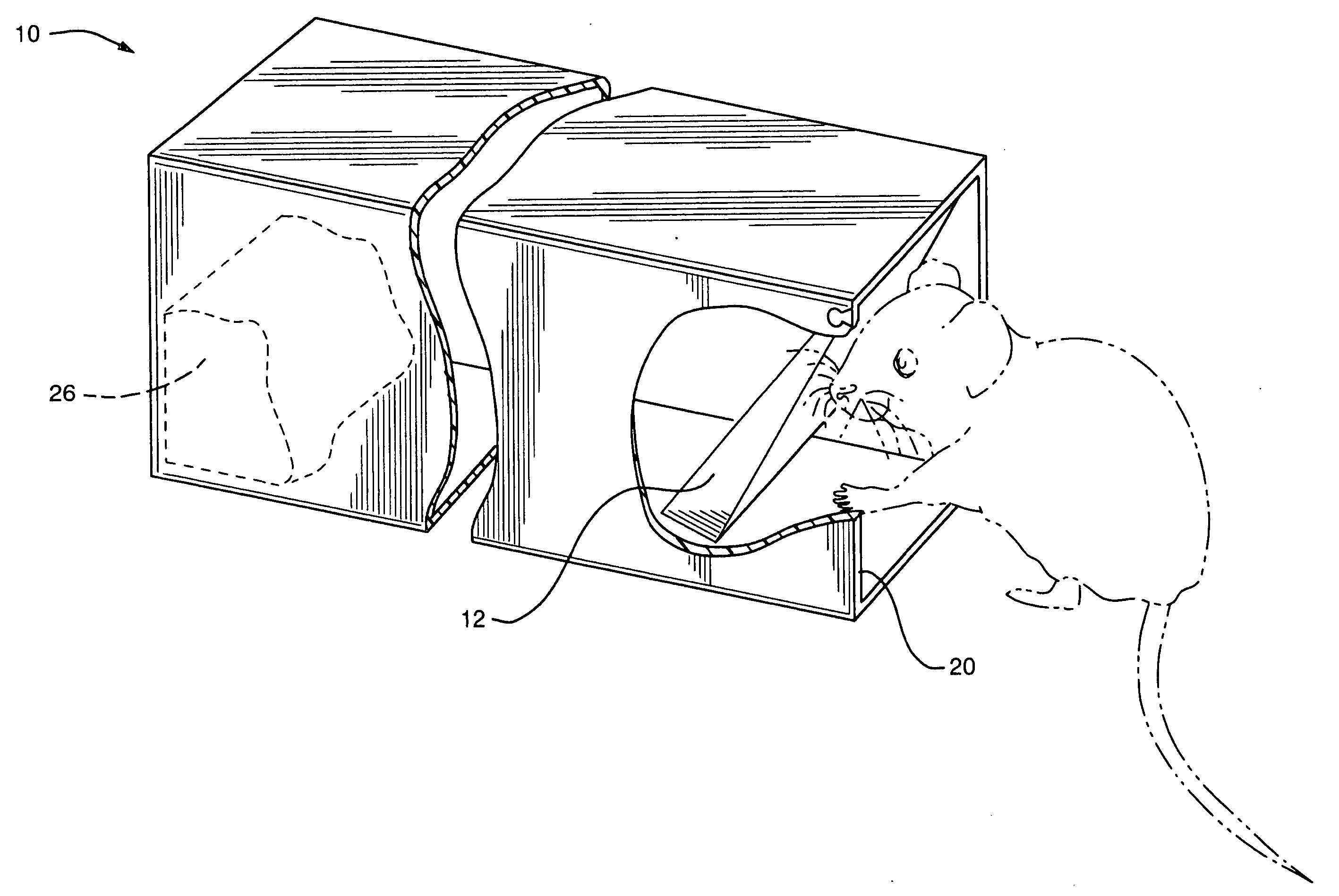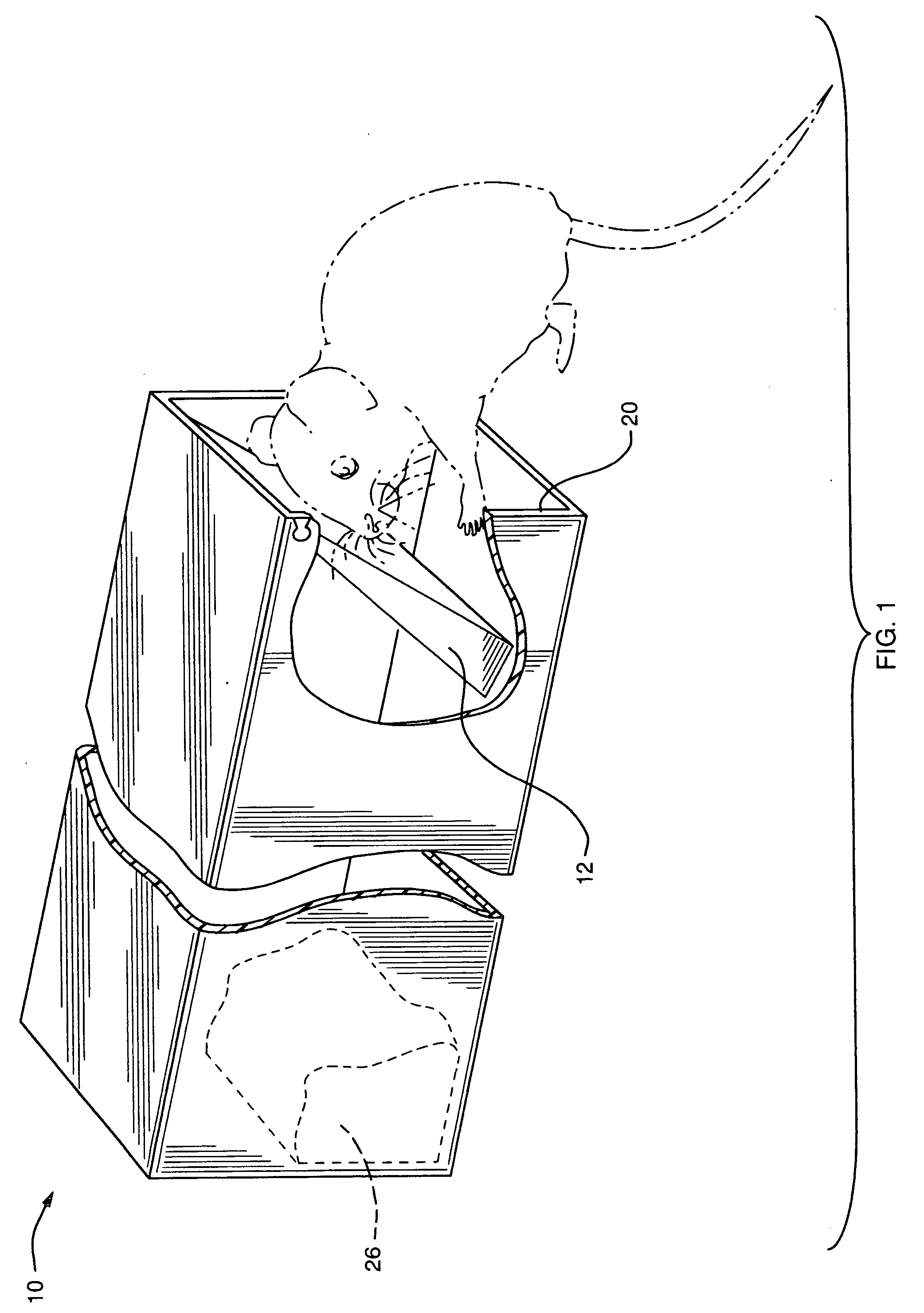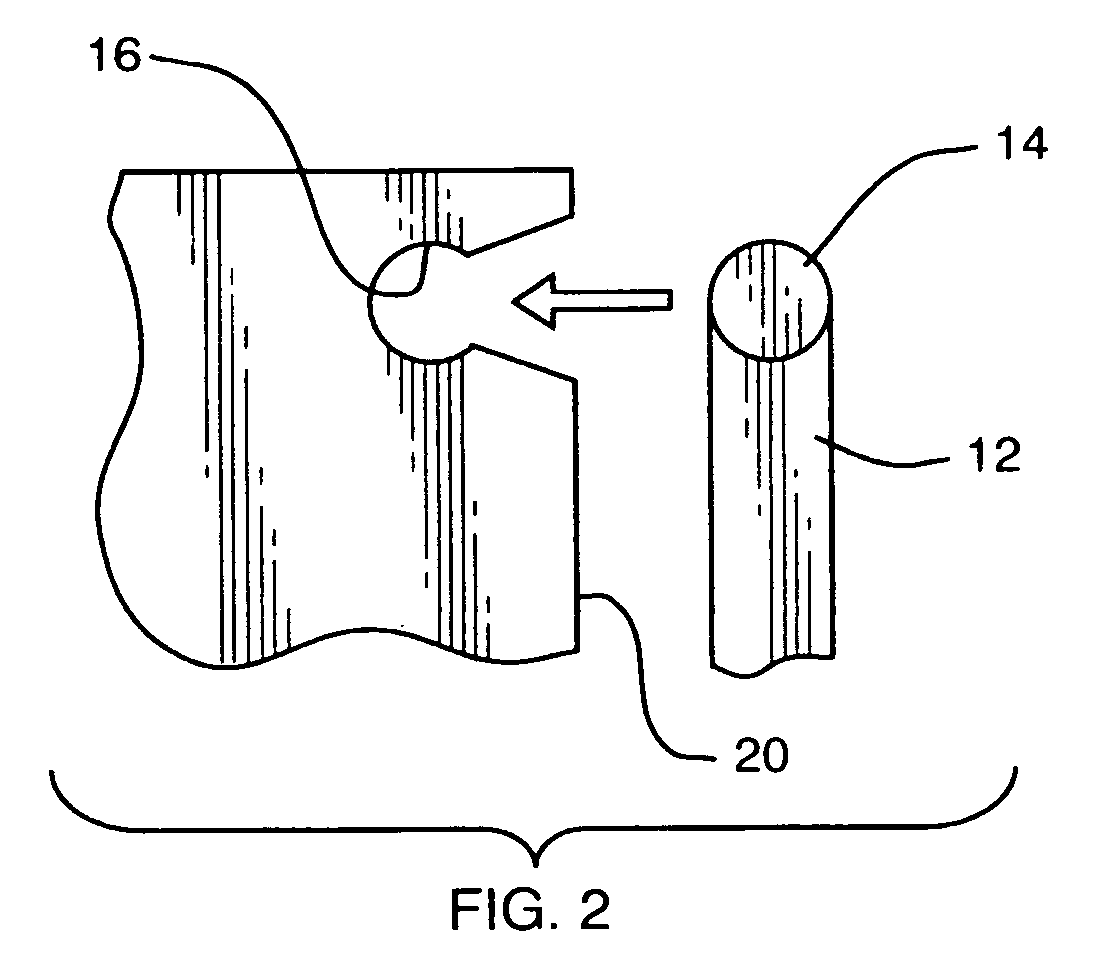Humane animal trap
- Summary
- Abstract
- Description
- Claims
- Application Information
AI Technical Summary
Benefits of technology
Problems solved by technology
Method used
Image
Examples
Embodiment Construction
[0023] Referring first to FIGS. 1-3 there is illustrated an animal trap of the enclosure type, consisting of only two discrete parts, including an elongated rectangular enclosure 10 made of a light plastic material and having one open end, and a one-way metal or hard plastic door 12 hinged from the top of the open end of the enclosure and adapted to close and seal the open end of the enclosure.
[0024] The top of door 12 comprises snap-in hinges each formed by an appendage 14 that extends sideward from the top of the door, and that snaps into and pivotally engages a receptacle 16 channeled to the front edge 20 of each side of the enclosure. Alternatively receptacles 16 may be “closed” holes (without an entry channel) into which appendages 14 snap when the door is squeezed between the somewhat flexible sides of the open end of enclosure 10. The length of door 12 is made slightly longer than the height of the opening in enclosure 10, and as a result door 12 is constrained to pivot upwa...
PUM
 Login to View More
Login to View More Abstract
Description
Claims
Application Information
 Login to View More
Login to View More - R&D
- Intellectual Property
- Life Sciences
- Materials
- Tech Scout
- Unparalleled Data Quality
- Higher Quality Content
- 60% Fewer Hallucinations
Browse by: Latest US Patents, China's latest patents, Technical Efficacy Thesaurus, Application Domain, Technology Topic, Popular Technical Reports.
© 2025 PatSnap. All rights reserved.Legal|Privacy policy|Modern Slavery Act Transparency Statement|Sitemap|About US| Contact US: help@patsnap.com



